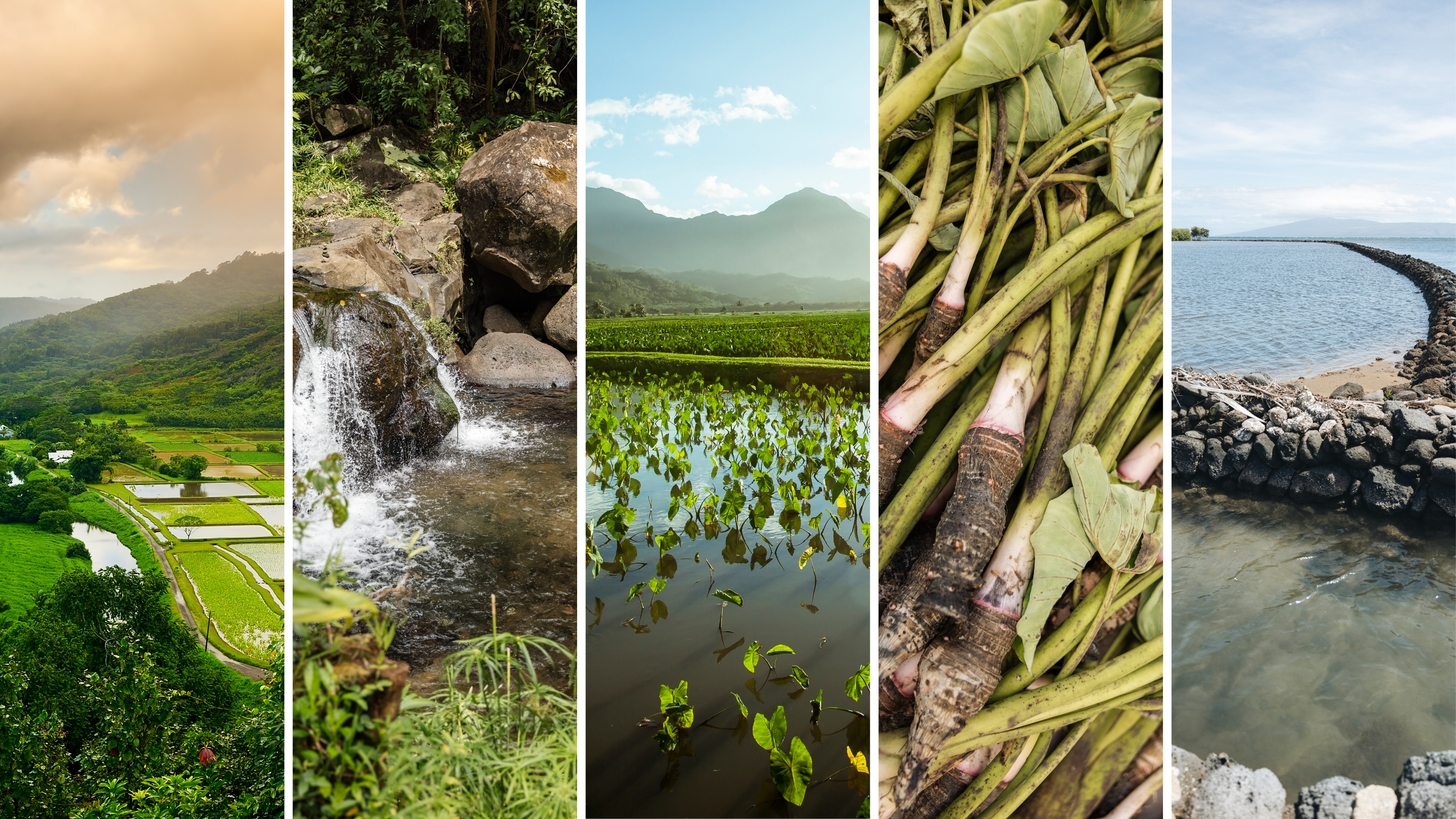
WHAT IS REGENERATIVE TOURISM?
Regenerative tourism is a way of traveling that gives back - to the places we visit and the people who call them home.
Unlike traditional tourism - which often focuses on check off sights and sites, being entertained, and moving on - or even sustainable tourism - which aims to reduce harm to the natural environment - regenerative tourism goes a step further. It asks:
How can tourism restore and renew the places we visit?
Here’s one way to think about it:
Imagine you’re visiting Hawaiʻi and want to experience Hawaiian culture.
A traditional tourism experience might involve attending a large lūʻau, where you are offered a purple orchid lei, sit back, eat buffet food, and watch a performance - with little context about the meaning behind what you’re seeing or the meal you’re enjoying.
A sustainable tourism experience might involve a smaller, locally-run lūʻau that limits group size, uses compostable utensils, explains some of the history and customs behind hula and ʻŌlelo Hawaiʻi (the Hawaiian language), and invites you to make lei with locally-grown, native flowers
A regenerative tourism experience could involve spending time with a local cultural practitioner, learning hands-on about traditional farming, navigation, or music - and contributing your time to help care for the land you have been invited to enjoy, or support the work that goes into your experience.
In regenerative tourism, tourists are not just guests, visitors, or observers. They’re participants in a living system, giving back in ways that are guided by curiosity, respect, and a willingness to listen and learn.
Tourism shapes life in Hawaiʻi every day - but it can also put pressure on the land, strain local communities, and commodify culture. And visitors, through no fault of their own, can sometimes miss out on what makes this place truly special: the opportunity to build real connection with people, land, and culture.
That’s why Hawaiʻi is moving toward something different.
Regenerative tourism in Hawaiʻi is grounded in Hawaiian values like mālama (care), kuleana (responsibility), and aloha (connection). It’s not just about reducing strain on place and resources - it’s about giving back to the people and places that make these islands unique, and experiencing Hawaiʻi as a relationship of giving back and genuinely connecting.
Hawaiʻi’s leaders and communities are rethinking tourism as an even better relationship - one built on respect, balance, long-term care, and authentic engagement.
WHY IT MATTERS TO HAWAIʻI
Whether youʻre a visitor, community member, policymaker, business owner, or nonprofit team member, regenerative tourism invites you to play a part.
Visitors can seek out experiences that give back and connect deeply with place.
Residents can help shape what a thriving tourism system looks like in their own communities.
Policymakers can support community-led, sustainable models that center culture, kōkua, and care.
Businesses can align their operations with local values, ecosystems, and community needs.
Nonprofits can care for our wahi pana (sacred spaces) and engage visitors in caring for place.
Regeneration happens when everyone has a seat at the table - and a role to play.
WHAT THIS MEANS FOR YOU
TECHNICAL ASSISTANCE & CAPACITY BUILDING PROGRAMS BY
To support development of a more regenerative tourism industry, the Hawaiʻi Tourism Authority introduced a suite of three new programs in 2024, collectively known as the Technical Assistance & Capacity Building (TACB) programs. Click below to learn more about how these programs are impacting businesses and nonprofits across Hawaiʻi.
The Foundational Technical Assistance program seeks to connect local businesses and nonprofits with foundational knowledge and connections with the visitor industry through a series of free, public panels, workshops, and seminars held across Hawaiʻi and streamed virtually.
The Community Stewardship program is a cohort based initiative aiming to assist local nonprofits that care for ʻāina and wahi pana (sacred places) taxed by tourism by connecting them with the visitor industry, expert assistance, and increased ʻike (knowledge) to build their internal capacity.
The Regenerative Experiences program is a cohort based initiative that aims to expand Hawaiʻi’s regenerative visitor industry by working with local businesses and nonprofits to develop more culturally-based, sustainable experiences for visitors that support local communities.
LATEST REGENERATIVE TOURISM NEWS
CONTACT US
Hoping to learning more about the move toward a more regenerative visitor industry for Hawaiʻi?
Interested in joining one of HTA’s cohort programs, or learning more about upcoming Foundational Technical Assistance workshops?
Fill out the contact form to the right, and we will be in touch soon.














